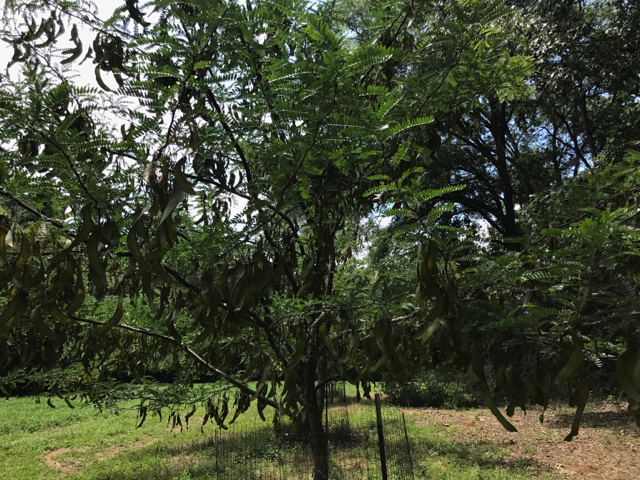No need to propagate. Grab the spade and come on up. I'll throw in some cedars and autumn olive if you play your cards right!
At my place it is hard to find pods that aren't eaten. Then the seeds come out the other end and make a tree. I suppose there is some draw / nutrition value there but I think I would fill the hole with a better tree.
I've heard that many people in the Midwest hate honeylocust and see them as pests. I can understand the issues with thorns, and I've also heard they are a low preference food in that region. In the South, especially the Deep South, deer flock to a honeylocust dropping pods, which they typically do in September/October. They are a major native food source here.
These trees that I show in the pictures are two cultivars of THORNLESS honeylocust selected because of their pod production. I got them from David Osborn who is a professor in the UGA Deer Lab & owns a wildlife tree nursery. These two cultivars, "Hershey" and "Calhoun", produce prolific amounts of pods that are 12-24" long, which is about twice as large as pods from native trees.
I planted these two trees about 4.5 years ago, so I would estimate they are 7-9 yrs old. At their current size, they will each drop a few thousand pods between Sept and Dec. I'm not even sure how to calculate how many pounds of food that is. They are free of thorns and don't require fertilizer, pruning, insecticide, limb training, or watering outside of rain. No issues with pests, cedar apple rust, fireblight, or other diseases. I've planted several hundred trees on my property, pears, plums, apples, crabs, persimmons, chestnut, and oak. If you can name another mast species that is as low maintenance and produces even close to the amount of food at 8 yrs old as these trees, please let us know. Their hole is definitely safe.


